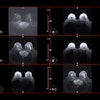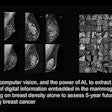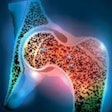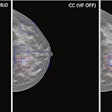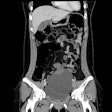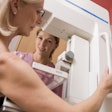Displaced Ukrainian women have double the odds of having advanced-stage breast cancer compared with Polish citizens, according to research published on 22 April in JAMA Network Open.
A team led by Lukasz Rabalski, PhD, from the University of Gdansk in Poland found that compared with the general Polish population, war refugee status was tied to a higher prevalence of aggressive tumor grades and more advanced stage disease at diagnosis. And displaced women tended to be younger.
“Our findings may inform health care policy decisions and resource allocation for cancer care in humanitarian crises,” the Rabalski team wrote.
Since the Russian invasion in February 2022, an estimated 7 million Ukrainians have been displaced by war. Many of these people are women and children. Displaced Ukrainian residents have sought shelter in European countries, including Poland. The researchers noted that this influx has its share of unique challenges in distributing cancer care resources.
Rabalski and colleagues studied associations between Ukrainian refugee status and clinical presentation of breast cancer compared with Ukrainian permanent residents in Poland and the general Polish population.
The retrospective, single-center study included data collected between 2021 and 2024 from 3,259 women. It included adult women with a diagnosis of stage 0 to IV breast cancer, regardless of treatment intent.
Of the total women, 44 were in the displaced group, 72 were in the Ukrainian permanent resident group, and 3,143 were in the general Polish population group. The permanent resident group had the youngest average age at 49.9 years, followed by the refugee group (52.9 years) and the Polish resident group (59.5 years).
The displaced group had the highest prevalence of stage III to IV disease and grade III tumors.
| Breast cancer trends among displaced Ukrainians and general Polish population | |||
|---|---|---|---|
| Diagnosis | General Polish population | Ukrainian permanent residents | Refugee group |
| Stage III to IV disease | 27% | 18% | 43.2% |
| Grade 3 tumors | 21.5% | 12.5% | 34.1% |
Adjusted analysis showed that displaced women had a twofold increase in odds of having stage III to IV disease (p = 0.03) and a 2.42-fold increase in odds of developing grade III tumors (p = 0.006).
And on weighted logistic regression analyses, the displaced group had significantly lower odds of presenting with stage 0 or I disease compared with the general Polish population group (odds ratio [OR], 0.43). Finally, Ukrainian permanent residents showed no significant differences from the general Polish population in stage distribution but had lower odds of high-grade tumors (OR for grade 3, 0.67; p = 0.26).
The study authors highlighted that the combination of younger age at presentation with more advanced disease suggests that current age-based screening recommendations may need to be adjusted for displaced populations. They suggested that healthcare practitioners consider breast cancer in younger refugee women and prioritize access to diagnostic services regardless of age.
“These findings highlight the need for targeted healthcare interventions for refugee populations, including enhanced screening programs and expedited diagnostic pathways,” the authors wrote.
Many of those women who knew about their disease are likely to have lost connections with their doctors in Ukraine, missed follow-up appointments, and, as a result, have terminal-stage cancer. If they didn't know about their disease, they might have postponed doctor appointments until they had severe symptoms. Also, at the start of full-scale war, many cancer patients were transported to other counties so as not to interrupt their medication.
It is thought that the specific problems faced by Ukrainian women in Poland include the language barrier, lack of knowledge of the healthcare system, and insurance/declaration/financial difficulties.
The full study can be accessed here.





